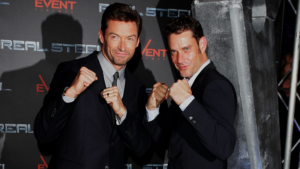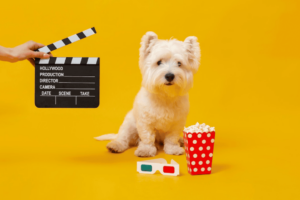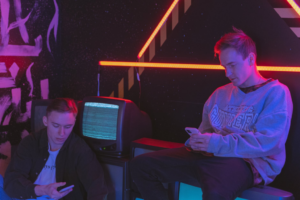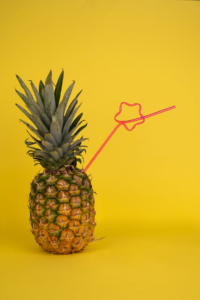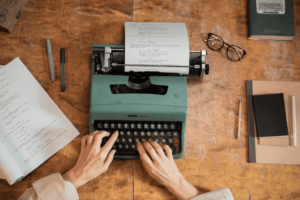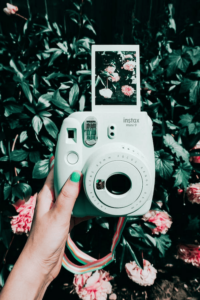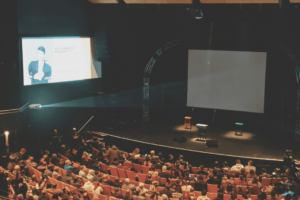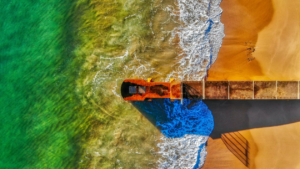A storyboard is a tool that helps to plan and organize the sequence of events in a story. It breaks a story into a set of circumstances and presents it as infinitesimal visual information. This information is then arranged linearly to communicate a story. Therefore, a storyboard is a perfect tool for:
- Storytelling
- Process explanation
- Showing the progression of time

A storyboard is a graphical representation of the story’s progress step-by-step in the modern day. It consists of several illustrated squares that represent each shot in a video. In addition, these squares contain notes about the scene and the script of the shot. Therefore, a storyboard serves as a roadmap to making a video.
A Brief History of Storyboard
The storyboard technique has been in use since 1930 by Howard Hughes and Walt Disney. They worked individually to produce the animated films Hell’s Angels and Three Little Pigs, respectively, eventually becoming the father of modern-day storyboards. However, Gone with the Wind, released in 1939, is the first film to be completely drawn out on a storyboard before filming.
Initially, the original storyboards contained sequential story cards pinned to a board. This facilitated the collaborators to discuss and revise the story in fragments perfecting it in parts instead of redoing a large-scale drawing.

Why Do You Need a Storyboard?
A storyboard offers several advantages, mainly while producing a video, some of which are listed below:
Organize Your Thoughts
As an author, a storyboard helps you concentrate on a single event, thereby perfecting each event individually. Further, it serves as a visual guide and enables you to navigate the production process efficiently.
Apart from this, storyboards are a great medium to test your ideas, like camera angles and cuts. Therefore, a storyboard solidifies your vision and helps you communicate it effectively.
Share Your Ideas
A storyboard serves as an effective communication tool to convey your idea to other people, invite feedback and work on it before production. In addition, this eases your task as you can rework fragments of information instead of on a large chunk.
Identify Problems Early
Since you can test your ideas with the help of a storyboard, you can identify problems that you may encounter in the future. This reveals the rework you have to do early on and saves time. Additionally, it lets you identify those shots that must be created with priority and work accordingly.
Plan Better
As a storyboard deals with bits of information, it ensures you don’t miss out on essential details. When you understand what is necessary for every scene, you can expect the best result.
Simplify Everything
Since your task is broken down, it simplifies working on it. Therefore, you can efficiently utilize your energy and create impactful work apart from saving time and budget.

How to Create a Storyboard?
A good storyboard can convey information in rough sketches, figures, or computer-generated drawings in an understandable manner. To plan your video, you need to know the fundamental elements of the storyboard. These include:
Panel
A panel is the most basic design element consisting of a space filled by a filmmaker. Additionally, it is a simple box that features 2D drawings that contain the actions and characters. These drawings are called shot images.
Shot number
The number indicates the sequence in which the shots must appear according to a video’s list.
Action
The primary activity happens in a shot.
FX
The technical details explain the creation of a shot in production and post-production. (e.g., aspect ratio, camera angles, camera movement, shot type, sound effects, special effects.)
Description Panel
A description panel consists of notes on the sequence of events. It may be located on the same page as the frame or opposite a spread. It will be insightful to other technicians and cinematographers working with the director as it explains the picture they are looking at.
Arrangement
This element decides how the frames and notes are arranged in a storyboard. Some of the most common options include:
- Sequential: The frames are arranged sequentially with frames and description panels on the same page or the facing page. In a sequential arrangement, you can view the storyboard frames one at a time.
- Comic: The frames are organized to read from left through right as in a book. This design offers movement and energy to the story being read.
- Flowchart: The frames are organized in a flowchart where parallel scenes are depicted parallelly. In contrast, sequential scenes are represented in a linear direction.
Steps to Make a Storyboard
Step 1: Create a Storyboard Template
The initial step to creating a storyboard is to create a template. For this purpose, draw a series of rectangular boxes that can accommodate notes or lines of script on paper.
Step 2: Add the Script
Break your story into different scenes and map each of them to a rectangle. Additionally, include your script in the rectangular boxes corresponding to the scene.
Step 3: Sketch Out the Story
Once you integrate the script into the storyboard, you have to include your drawings to depict the scene. You can use simple stick figures for this purpose and don’t have to be a cartoonist. Additionally, make use of arrows to indicate the flow of the story. If you find it challenging to draw, you can extract photographs or images from a magazine in place of it. Additionally, you can seek the help of online storyboarding tools to get characters, settings, speech bubbles, and text blocks.
Step 4: Add Notes
Finally, you can add notes that describe the scene or camera angles to the movement you wish to maneuver or any other special effects like audio or music.

Types of Storyboards
Hand-drawn storyboards
Hand-drawn storyboards are a classic and the most popular form of storyboarding. Apart from being economical, they help convey the main action happening in the shot and include some essential details.

In some cases, you may want a softcopy of your storyboards. For this purpose, you can substitute the paper with storyboarding software. Some of the popular storyboarding software available include:
- Storyboarder by Wonder Unit
- Plot
- FrameForge Storyboard Studio
- STORYBOARD THAT
- STUDIOBINDER
- SHOTPRO
- Boards Storyboard Creator
- MakeStoryboard
- PowerProduction Software
- Canva
Thumbnail Storyboards
As the name indicates, thumbnails are miniature versions of traditional storyboards. However, unlike hand-drawn storyboards, these storyboards constitute small sketches that are the size of a postage stamp. Hence, they are less detailed and take less time to create. Therefore, you can use them to draft your ideas quickly before a traditional storyboard.

Animated Storyboards
Animated storyboards have some dialogues, scripts, music, and visual elements. These storyboards consist of filmed sketches that showcase the proposed timing, pacing, and overall visual flow of the scene.

Videos on Storyboard
Animated Movies and storyboard
How to do animation storyboard
How can I use a Storyboard?
Film and Entertainment Industry
A film or a movie is generally visual storytelling. Hence, storyboards are of great use in these industries. They help you plan, produce and check your storyline effectively before filming.
Some film projects that greatly benefit from storyboarding include:
- Commercial advertisement
- A television show (with or without commercial breaks)
- Instructional video
- Feature film
- Independent Film
- YouTube & Vimeo Videos
Business
Stories are a great way to attract and connect with people. A storyboard lets you test umpteen choices in a business environment until your needs are met perfectly.
Some business scenarios that use storyboarding include:
- Planning for negotiations
- Personas
- Customer journey mapping
- User stories
- Mentoring/training for a difficult conversation
- Demonstrating a process
Education
Storyboards help break down information and communicate it effectively, simplifying a teacher’s job.
Tips and Best Practices for Storyboarding
You are not heading for a drawing competition
You may be tempted to create appealing drawings as you work on your storyboard. Hence, you must ensure you don’t sink into perfecting your pictures and concentrate on giving a visual form to your ideas. This will minimize the time you spend on storyboarding.
Mention Directions
Since a storyboard consists of information, you have to show directions amongst them to understand the coherence effectively. This will make your work more understandable and transparent.
Number your Thumbnails
Either create multiple versions of the same story or discuss it with other people to iron out potential issues. Numbering the thumbnails helps you and others identify problems and fix them.
Use a Pencil
To get a clear picture of your entire work, always use a pencil that allows you to modify any scene without disturbing its clarity.
Experiment Before You Finalize Your Storyboard
Experiment with different ways of telling your story. For example, change the coherence, and try different audio or video images before you finalize. This will improve your creativity and skill.
Use Your Storyboard to Make Things Easier for Everyone During Production
The best part of a storyboard is to include all the details. These details help people who work with you to understand your view and correlate with the visuals. This also strengthens your bond with them in the course of your project.
Directors and Storyboards
Storyboards work well, especially with directors. Knowing how some of the directors have used it in their direction helps you understand the use of a storyboard better. Some of the directors who use it include:
Joel and Ethan Coen
In their first feature film, Blood Simple, the Coen brothers followed a unique storyboarding technique in which they cloaked their original storyboards with finished frames to discuss their thought process.
Ridley Scott
In his career as a director, Ridley Scott brought in some intricate and layered imagery in his films Blade Runner and Alien. This imagery was possible as he merged his talent for art and the storyboarding technique.
The art of storyboarding with Ridley Scott
George Miller
In his animated film, Mad Max, the director brought story and character into the storyboard and brought it close to a silent action film. It was post this process, he crafted the script for the film.
Mad Max’s George Miller on the graphic novel approach to ‘Fury Road’
Frequently Asked Questions
How to quickly make a storyboard?
The best way to storyboard is to download a storyboard template online, sketch, and add notes and scripts.
How many pages should a storyboard be?
Depending on the details you add to your storyboard, the number of pages can vary accordingly.
Must I storyboard every shot?
Although it is unnecessary to storyboard every shot, it depends on how much detail you want to include and the number of ideas you want to articulate.
What is the difference between a script and a storyboard?
A written text is called a script, whereas a storyboard is a collection of images that tell the story.
Which comes first, script or storyboard?
It is best to always start with the script and then progress to the visuals.
Wrapping Up
You need to develop intense videos to create logical storytelling that compels your viewer’s attention. For this purpose, you have to distill your ideas and remove contradictory or inconsistent details. Additionally, you must confidently convey your vision and opinion, which is possible with the help of storyboards.
